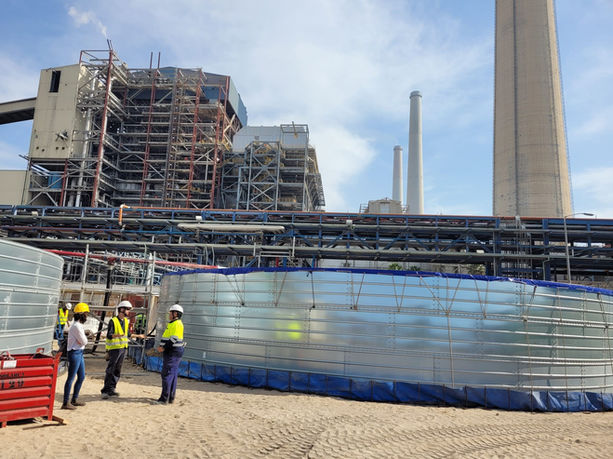
INDUSTRIAL WASTEWATER TECHNOLOGIES
Industrial wastewater is a byproduct of a certain plant or factory’s production process.
Industrial wastewater has many risk characteristics that are far more diverse than those of domestic wastewater, and in some cases defined as hazardous substances. Different risk characteristics apply to hazardous substances. Those risk characteristics are described in “the orange book” and are divided into nine main categories with some sub-categories.
Industrial wastewater is sometimes categorized as organic or inorganic wastewater according to its content.
Organic wastewater is defined by a high content of organic matter, FOG, TOC, N, and P. While pH levels are around neutral. In many cases the wastewater is composted or anaerobically treated.
Some organic wastewater comes from a mineral source such as garage oil separators, chip processing emulsions, etc. Organic wastewater of a mineral source (oil and distillates) is treated by first separating each phase and than treating each fraction separately.
Inorganic wastewater is usually derived from industrial leachate, acids, bases, etc., and is defined by high concentrations of salts, heavy metals, extreme pH levels (either very acidic or very basic). Treatment of inorganic wastewater is done using physicochemical methods that include neutralization, sedimentation, evaporation, membrane separation, etc.

Industrial Wastewater Treatment Technologies
Centrifugal Separation
This is usually one of the first steps of the treatment. Centrifugal separation can be done using a three-phase centrifuge, where one centrifuge separates the material into three phases (solid, liquid, oil) or using a decanter separator that first separates the solids, and then separates the oil from the water. The system works using the materials’ different densities.
DAF- Dissolved Air Flotation System
This is a useful system that is commonly used in the food industry for TSS, oils and grease separation. The system inserts coagulants and flocculants into the liquid, which results in the creation of flocs (aggregates) of the material, which allows easier separation of solids and liquids. The separation is done by air flow through the liquid. The air makes the solids float, and they are separated using a skimmer.
Physicochemical Treatment
This is an inclusive name for separation treatments using chemicals. Some of these treatments include neutralization of acids and bases, sedimentation of heavy metals, chemical oxidation, etc. Physicochemical treatments are very common in the wastewater treatment industry because they allow a reliable, relatively low-priced separation of various pollutants.
AOP- Advanced Oxidation Processes
The difference between Advanced Oxidation Processes and regular oxidation is that regular oxidation is done using OH radicals, which are strong, unselective oxidants that are suitable for the chemical breakdown of a large number of organic molecules, including non-biodegradable molecules. The radicals are made in room temperature and atmospheric pressure conditions. Technologies in the field include high pH ozonation, hydrogen peroxide with UV light or ozone, sonication, the Fenton method, and various combinations of those.
These methods are very effective for the chemical breakdown of organic materials as solvents and non-biodegradable organic materials. Nevertheless, these methods are effective for relatively low concentrations because the operation, establishment and maintenance costs are quite high. The Sutok Company is a representative of some world class companies in the field. For more information, please Contact Us.
Biological Aerobic Treatment
At low to medium organic load rates, aerobic biological reactors are used. In these reactors, air is inserted (forced) into the reactor, and serves as available oxygen for bacterial breakdown. Aerobic reactors are very effective and the breakdown rate in them is much larger than in anaerobic reactors. The main breakdown products are carbon dioxide (CO2) and water.
Let it be noted that the main disadvantage of treatment using biological processes is the high sensitivity to environmental conditions- pH, temperature, salinity, toxicity, heavy metals, etc.
Biological Anaerobic Treatment
Biological reactors in anaerobic conditions are suitable for wastewater from organic sources only. These reactors have several advantages:
Low generation rate of excess sludge, low nutrient requirements, produces methane as a final product that can be converted into energy, and the process itself does not require energy. Usually when the organic load rates are high, a biological anaerobic reactor is used at first, rather than an aerobic one.
A noticeable disadvantage of the anaerobic treatment is the slow breakdown rate and the production of sulfides. Factors that affect the process- temperature, pH levels, ammonia concentrations, sulfides, etc.






